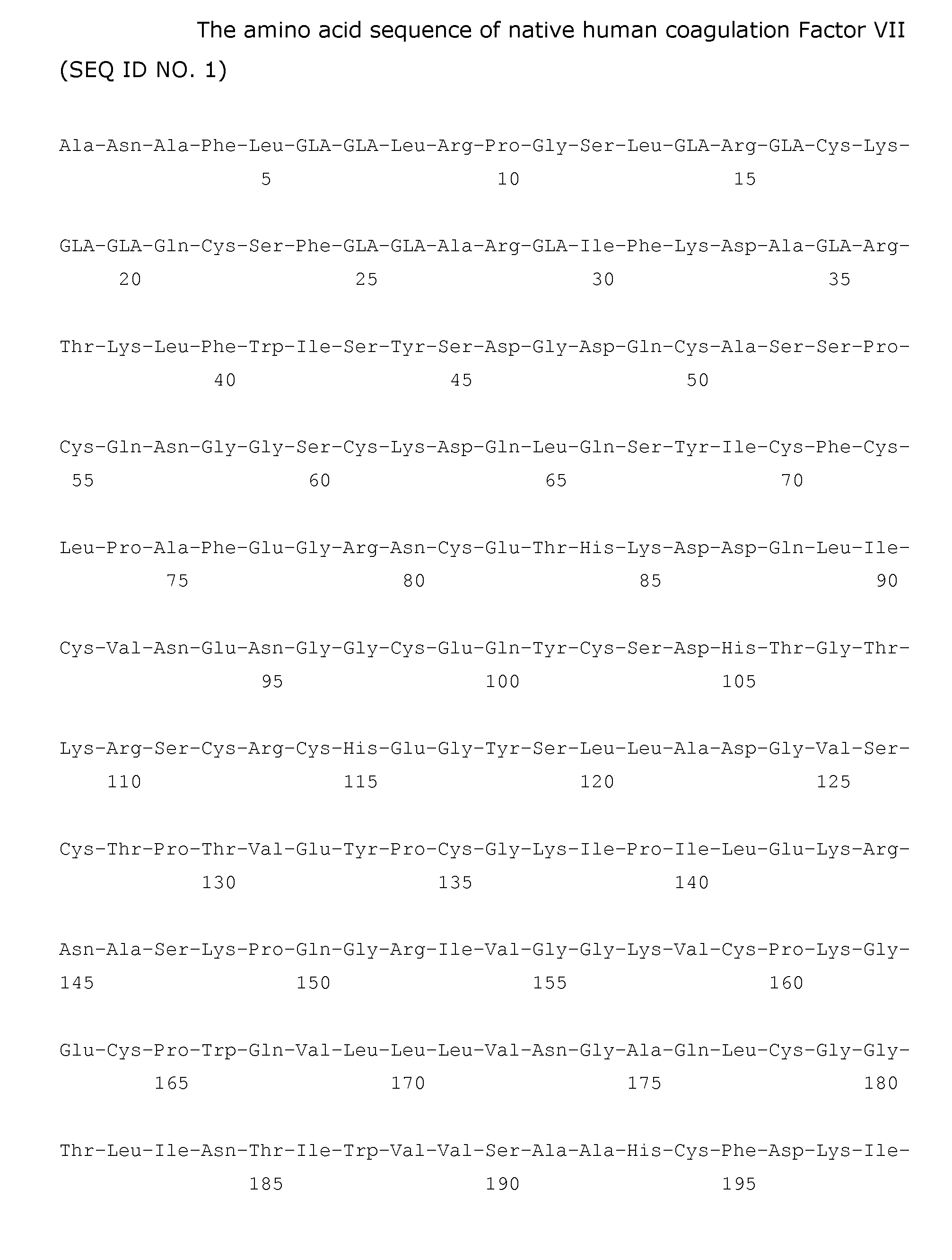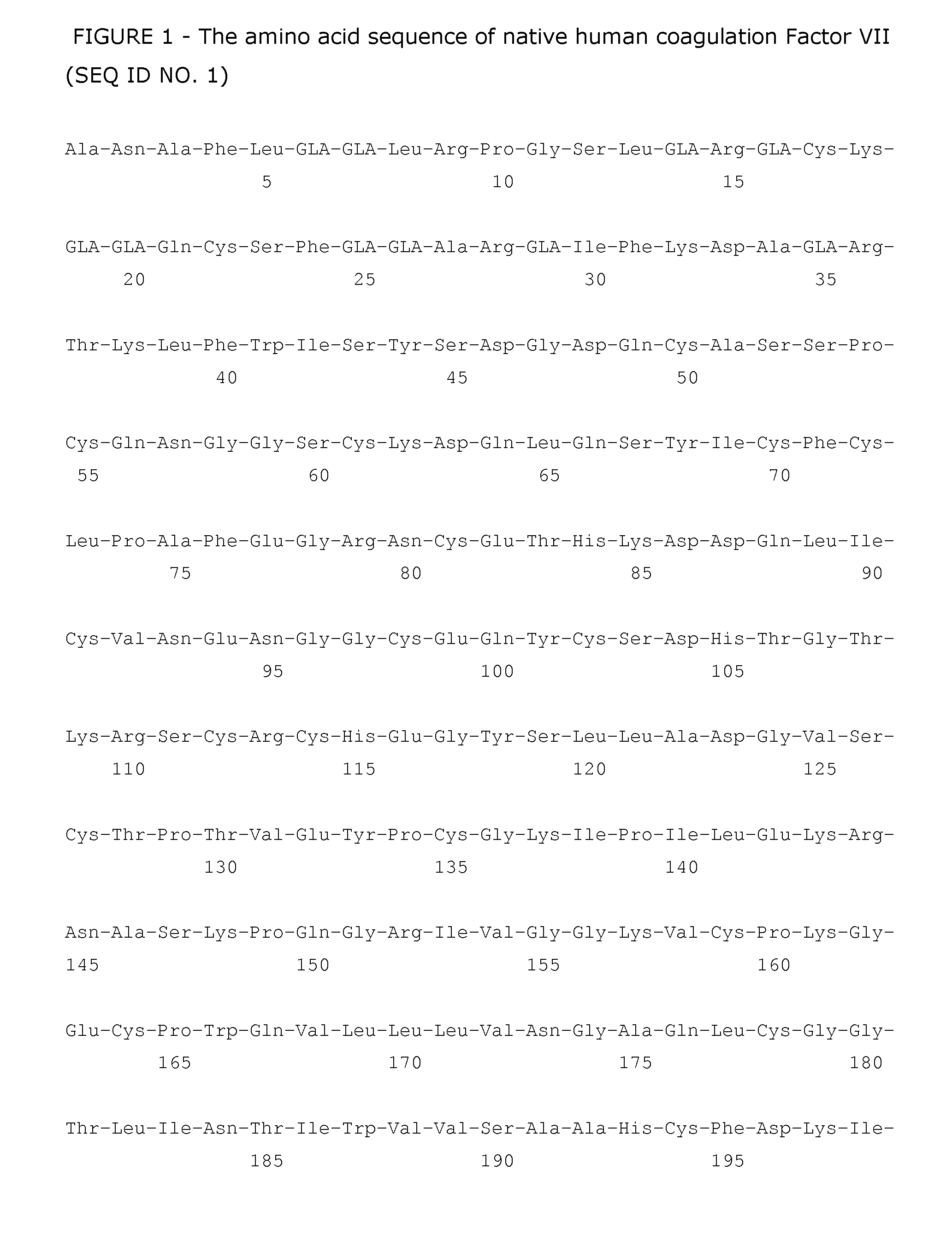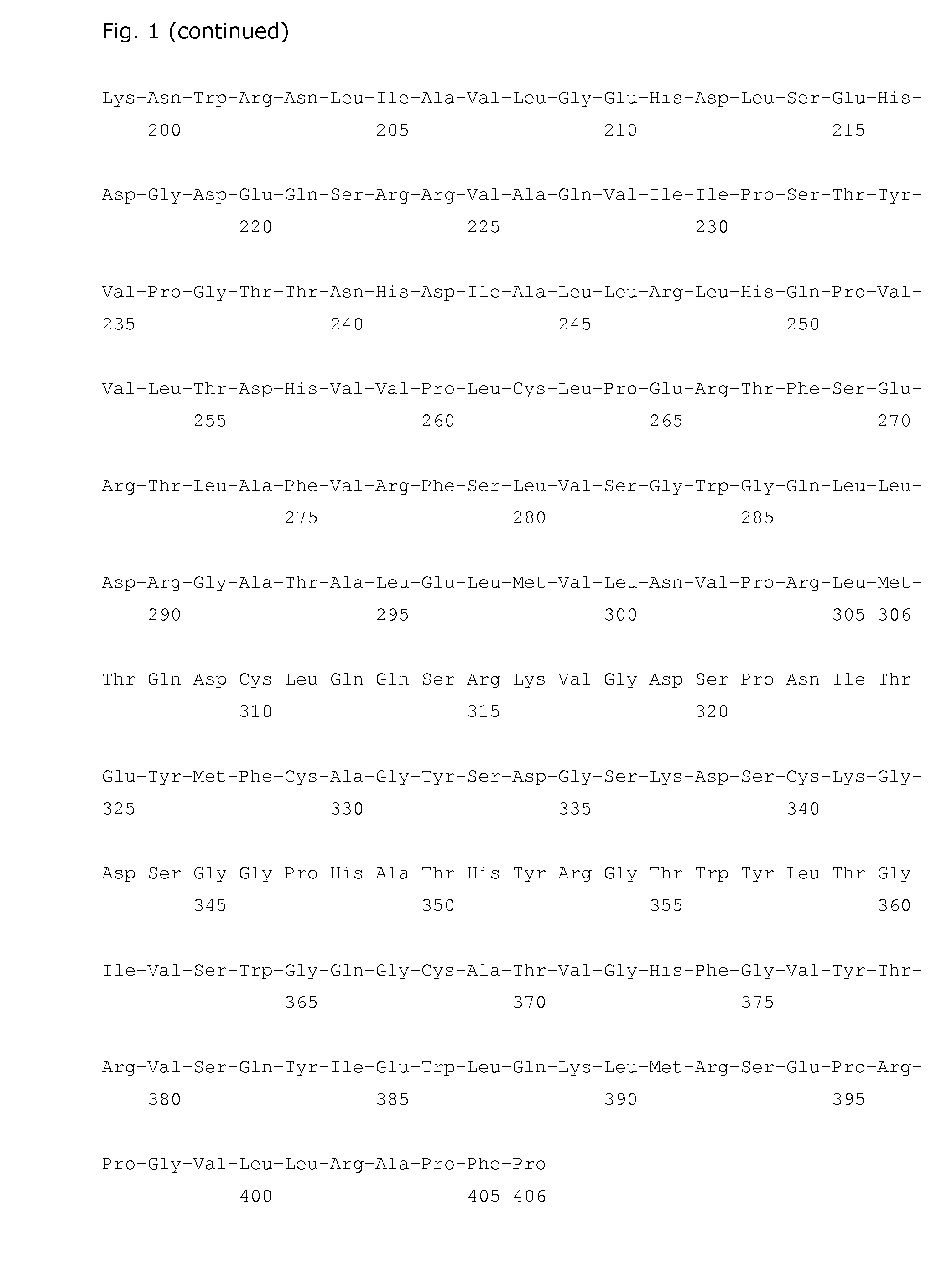Human Coagulation Factor VII Polypeptides
- Summary
- Abstract
- Description
- Claims
- Application Information
AI Technical Summary
Benefits of technology
Problems solved by technology
Method used
Image
Examples
example 1
DNA Encoding D212N-FVII
[0174]The mutation was introduced into the mammalian expression vector pZym219b (see FIG. 2), which encompasses the FVII cDNA, using the PCR based Quick-Change® Site-Directed Mutagenesis Kit with the two following primers (Tm approx. 87.8° C. at standard conditions):
Forward:5′ C CTG ATC GCG GTG CTG GGC GAG CAC AAC CTC AGC GAG CAC G(SEQ ID NO:2)Backward:5′ C GTG CTC GCT GAG GTT GTG CTC GCC CAG CAC CGC GAT CAG G(SEQ ID NO:3)
[0175]The oligonucleotide primers, each complementary to opposite strands of the vector, were extended during temperature cycling by means of Pfu DNA polymerase. On incorporation of the primers, a mutated plasmid containing staggered nicks was generated. Following temperature cycling, the product was treated with DpnI which is specific for methylated and hemimethylated DNA to digest the parental DNA template and to select for mutation-containing synthesized DNA.
[0176]Procedures for preparing a DNA construct for all the FVII variants according...
example 2
Preparation of D212N-FVII
[0178]BHK cells were transfected essentially as previously described (Thim et al. (1988) Biochemistry 27, 7785-7793; Persson and Nielsen (1996) FEBS Lett. 385, 241-243) to obtain expression of the specific FVII variant. Briefly, Baby Hamster Kidney (BHK) cells were transfected with the D212N_pZym219b_FVIIcDNA construct using Lipofectamine for production of a stable cell line. Methotrexate was used as selective agent. The established stable transfected cell line was expanded to a medium large expression giving a total of approx. 1500 ml cell supernatant. DMEM supplemented with 2% (V / V) fetal calf serum, antibiotics and Vitamin K12 were used for expression.
[0179]The Factor VII variant was purified as follows:
[0180]The mutant was protein purified using first a Q Fast Flow ion-exchange column, followed by a mAb affinity column, and last a MonoQ ion-exchange column. Cell supernatants were initially cleared by centrifugation at 18,000 RPM, filtrated on a 2 pm filt...
example 3
In Vitro Hydrolysis Assay—Amidolytic Activity
[0182]Native (wild-type) Factor VIIa and Factor VIIa variant (both hereafter referred to as “Factor VIIa”) are assayed in parallel to directly compare their specific activities. The assay is carried out in a microtiter plate (MaxiSorp, Nunc, Denmark). The chromogenic substrate D-Ile-Pro-Arg-p-nitroanilide (S-2288, Chromogenix, Sweden), final concentration 1 mM, is added to Factor VIIa (final concentration 100 nM) in 50 mM Hepes, pH 7.4, containing 0.1 M NaCl, 5 mM CaCl2 and 1 mg / ml bovine serum albumin. The absorbance at 405 nm is measured continuously in a SpectraMax™ 340 plate reader (Molecular Devices, USA). The absorbance developed during a 20-minute incubation, after subtraction of the absorbance in a blank well containing no enzyme, is used to calculate the ratio between the activities of variant and wild-type Factor VIIa:
Ratio=(A405 nm Factor VIIa variant) / (A405 nm Factor VIIa wild-type).
[0183]A 2× higher amidolytic activity was me...
PUM
| Property | Measurement | Unit |
|---|---|---|
| Coagulation enthalpy | aaaaa | aaaaa |
Abstract
Description
Claims
Application Information
 Login to View More
Login to View More - R&D
- Intellectual Property
- Life Sciences
- Materials
- Tech Scout
- Unparalleled Data Quality
- Higher Quality Content
- 60% Fewer Hallucinations
Browse by: Latest US Patents, China's latest patents, Technical Efficacy Thesaurus, Application Domain, Technology Topic, Popular Technical Reports.
© 2025 PatSnap. All rights reserved.Legal|Privacy policy|Modern Slavery Act Transparency Statement|Sitemap|About US| Contact US: help@patsnap.com



